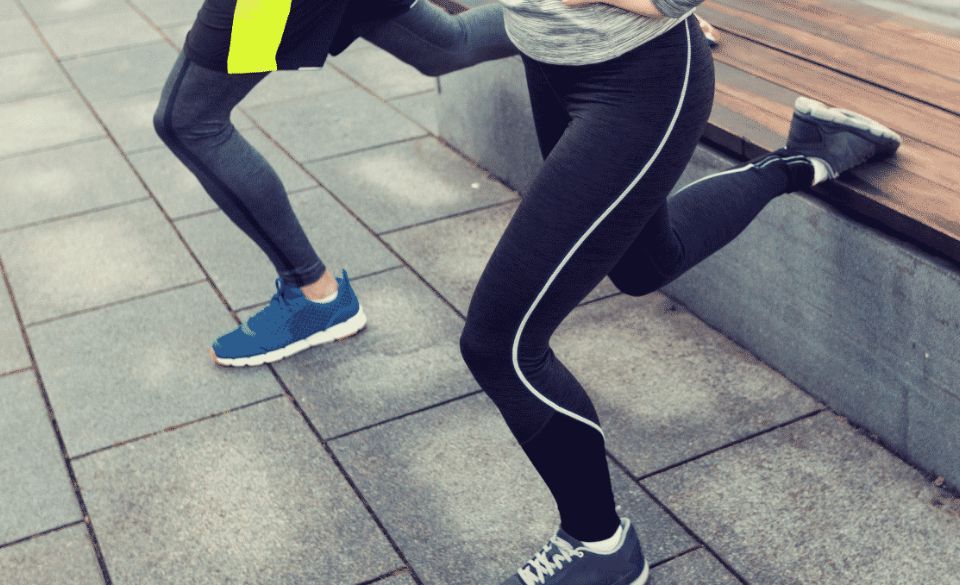
Single Leg Lunge – A Guide How To and More
Page Contents
If you are looking for a lower body workout that can be modified, look no further than the single leg lunge.
The single leg lunge can be done with your body weight, or by adding extra weight, such as a dumbbell or a barbell. It is a great way to target lower body muscles as well as improve balance and coordination.
In this article, we look at the benefits of doing single-leg lunges and how to perform them correctly. Keep reading to learn more.
What Is A Single Leg Lunge
A single leg lunge is a lower body exercise that helps to work each side of the body independently. This helps to activate and improve your stabilizing muscles which can improve coordination, balance, and stability. This type of exercise is used a lot by runners, cyclists, mountain bikers, and football players. However, it is a great exercise for anyone who wants to improve their overall lower body condition.
How To Perform A Single Leg Lunge
To do a single leg lunge, start but standing in a split stance. Place your right foot forward and left foot on a steeper and place your arms by your waist.
Hold this position as you lower your hips towards the ground. Do this by bending your legs to 90 degrees. Continue to lower your hips down until your left knee is close to the floor.
Once you are close to the floor, use your right leg (heel) to push you back to the starting position.
Finish your desired number of repetitions and make sure you follow some of our tips below:
– Avoid leaning the body either back or forward during the lunge
– Don’t allow your knees to go past your toes.
– Always keep your back heel slightly lifted.
– If doing this exercise for the first time, use a stick or wall to help you keep balance.
– Add weight to the exercise once you can perform a stable lunge
– If you don’t want to add weights, try using a ball instead of a stepper. This will help improve balance and coordination better.
Benefits Of A Single Leg Lunge
Just like normal lunges, there are many benefits to doing regular single-leg lunges. Below are the top five benefits of doing single-leg lunges.
Weight Loss
Single leg lunges work all large muscles in your lower body, this means they can help build lean muscle mass and promote weight loss (fat reduction). By doing regular single-leg lunges, it can help increase your resting metabolism, which can help burn calories and trim unwanted weight.
Balance & Stability
Since you work on each side of your body, the single leg exercise can help activate stabilizing muscles, which can help improve balance and coordination. It also means when you work one leg at a time, it causes your core and spine to work harder (to keep balanced).
Alignment and symmetry
Single-leg lunges are a great way to correct imbalances and misalignments in your body. That means if you feel weak on one side or not symmetrical, single-leg lunges can help improve this.
Core & Back Muscles
Since single-leg lunges strengthen your back and core muscles, it means it will reduce your chances of injury. They will also help with improving your posture, and make common movements easier.
Lunges strengthen your back and core muscles without putting too much stress or strain on your spine. A strong, stable core reduces your chance of injury and improves your posture, making common movements easier.
What Muscle Does A Single-leg Lunge Work?
Single-leg lunges help increase muscle mass and strength. However, they primarily focus on the core, butt, and legs. Below are the muscles single legs lunges primarily work:
– Abdominals
– Back muscles
– Gluteal muscles
– Quadriceps
– Hamstrings
– Calves
How To Get Results
Single leg lunges are simple, they are easily accessible to most people. That means they can be performed throughout the day, and without the need for a gym membership.
However, to see results it is important to stay consistent to maintain results over time.
Generally, noticeable results will take a few months to develop. And to see good development, you want to include 2 to 3 sets of 8 to 12 repetitions.
If you are feeling like the body is starting to plateau, either add weight or add more repetitions to the workout.
If done right, you should start to see improved coordination, balance, and fat reduction.


